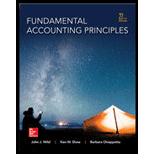
Introduction:
Present value: The present value of a future amount is the worth of the future amount in the present time. The value of an amount today is not the same as the amount tomorrow or in some future date. The worth /value of an amount changes with time as the amount has a time value. The present value of a future amount is calculated by discounting back the future amount to the present, considering the discount rate and the time period for which the amount is discounted as shown below.
Without applying this formula, the present value is calculated by using the present table. Here, present value is calculated by multiplying the future amount with the present discount factor. The present discount factor depends on the discount rate (i) and the time period (n) and it is found from the present table. The present table provides present discount factor for different values of the discount rate (i) and the time period (n).
Future value: The future value of a present amount is the worth of the present amount in the future time. The value of an amount today is not the same as the amount tomorrow or in some future date. The worth /value of an amount changes with time as the amount has a time value. The future value of a present amount is calculated by considering the discount rate/interest rate and the time period for which the amount is discounted as shown below.
Without applying this formula, the future value is calculated by using the future table. Here, future value is calculated by multiplying the present amount with the future discount factor. The future discount factor depends on the discount rate (i) and the time period (n) and it is found from the future table. The future table provides future discount factor for different values of the discount rate (i) and the time period (n).
Compounding: Compounding refers to the process where principal amount along with interest is assumed to be reinvested and earnings are made on them
To find: The interest rate column and number of periods row in the future value table B.2 to work with the following rates, considering for two years.
1. 8% annual rate, compounded quarterly
2. 12% annual rate, compounded annually
3. 6% annual rate, compounded semiannually
4. 12% annual rate, compounded monthly
Answer to Problem 1QS
Solution:
1. 2% interest rate column and 8 numbers of periods row should be used.
2. 12% interest rate column and 2 number of period row should be used.
3. 3% interest rate column and 4 numbers of periods row should be used.
4. 1% interest rate column and 24 number of periods row should be used
Explanation of Solution
Explanations:
1.
Here, compounding is quarterly. It means interest payment is received four times in a year. So, there will be four periods in a year. There are two years and so, number of periods will be . And the quarter interest rate is the annual interest rate divided by four. So, the quarter interest rate will be . So, for the given case, 2% interest rate column and 8 number of periods row should be used from the future table B.2.
2.
Here, compounding is annually. It means interest payment is received once in a year. So, there will be one period in a year. There are two years and so, number of periods will be 2. And the annual interest rate is 12%. So, for the given case, 12% interest rate column and 2 number of periods row should be used from the future table B.2.
3.
Here, compounding is semiannually. It means interest payment is received two times in a year. So, there will be two periods in a year. There are two years and so, number of periods will be . And the semiannual interest rate is the annual interest rate divided by two. So, the semiannual interest rate will be . So, for the given case, 3% interest rate column and 4 number of periods row should be used from the future table B.2.
4.
Here, compounding is monthly. It means interest payment is received twelve times in a year. So, there will be twelve periods in a year. There are two years and so, number of periods will be . And the monthly interest rate is the annual interest rate divided by twelve. So, the monthly interest rate will be . So, for the given case, 1% interest rate column and 24 number of periods row should be used from the future table B.2.
Want to see more full solutions like this?
Chapter B Solutions
Fundamental Accounting Principles -Hardcover

 AccountingAccountingISBN:9781337272094Author:WARREN, Carl S., Reeve, James M., Duchac, Jonathan E.Publisher:Cengage Learning,
AccountingAccountingISBN:9781337272094Author:WARREN, Carl S., Reeve, James M., Duchac, Jonathan E.Publisher:Cengage Learning, Accounting Information SystemsAccountingISBN:9781337619202Author:Hall, James A.Publisher:Cengage Learning,
Accounting Information SystemsAccountingISBN:9781337619202Author:Hall, James A.Publisher:Cengage Learning, Horngren's Cost Accounting: A Managerial Emphasis...AccountingISBN:9780134475585Author:Srikant M. Datar, Madhav V. RajanPublisher:PEARSON
Horngren's Cost Accounting: A Managerial Emphasis...AccountingISBN:9780134475585Author:Srikant M. Datar, Madhav V. RajanPublisher:PEARSON Intermediate AccountingAccountingISBN:9781259722660Author:J. David Spiceland, Mark W. Nelson, Wayne M ThomasPublisher:McGraw-Hill Education
Intermediate AccountingAccountingISBN:9781259722660Author:J. David Spiceland, Mark W. Nelson, Wayne M ThomasPublisher:McGraw-Hill Education Financial and Managerial AccountingAccountingISBN:9781259726705Author:John J Wild, Ken W. Shaw, Barbara Chiappetta Fundamental Accounting PrinciplesPublisher:McGraw-Hill Education
Financial and Managerial AccountingAccountingISBN:9781259726705Author:John J Wild, Ken W. Shaw, Barbara Chiappetta Fundamental Accounting PrinciplesPublisher:McGraw-Hill Education





